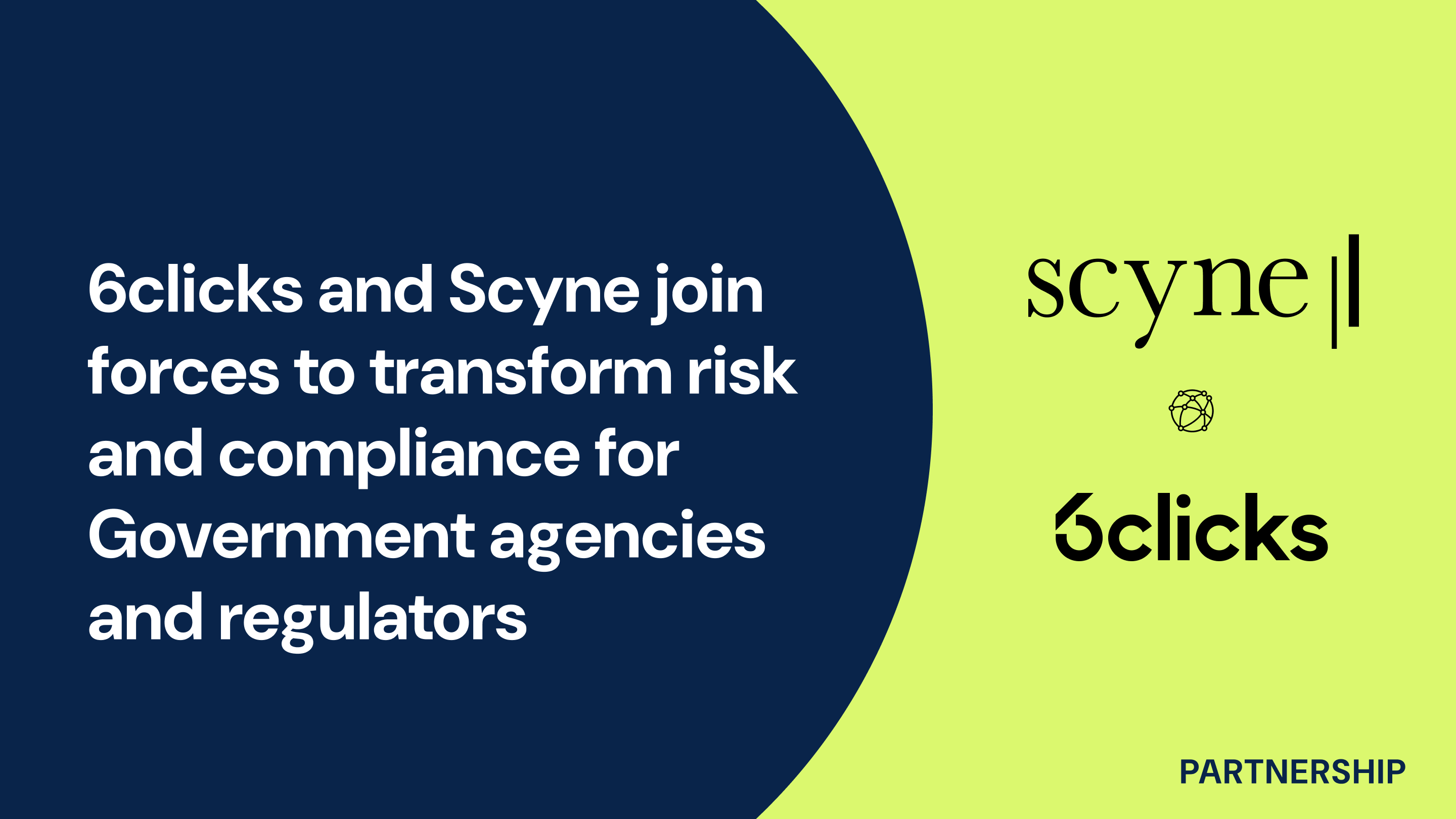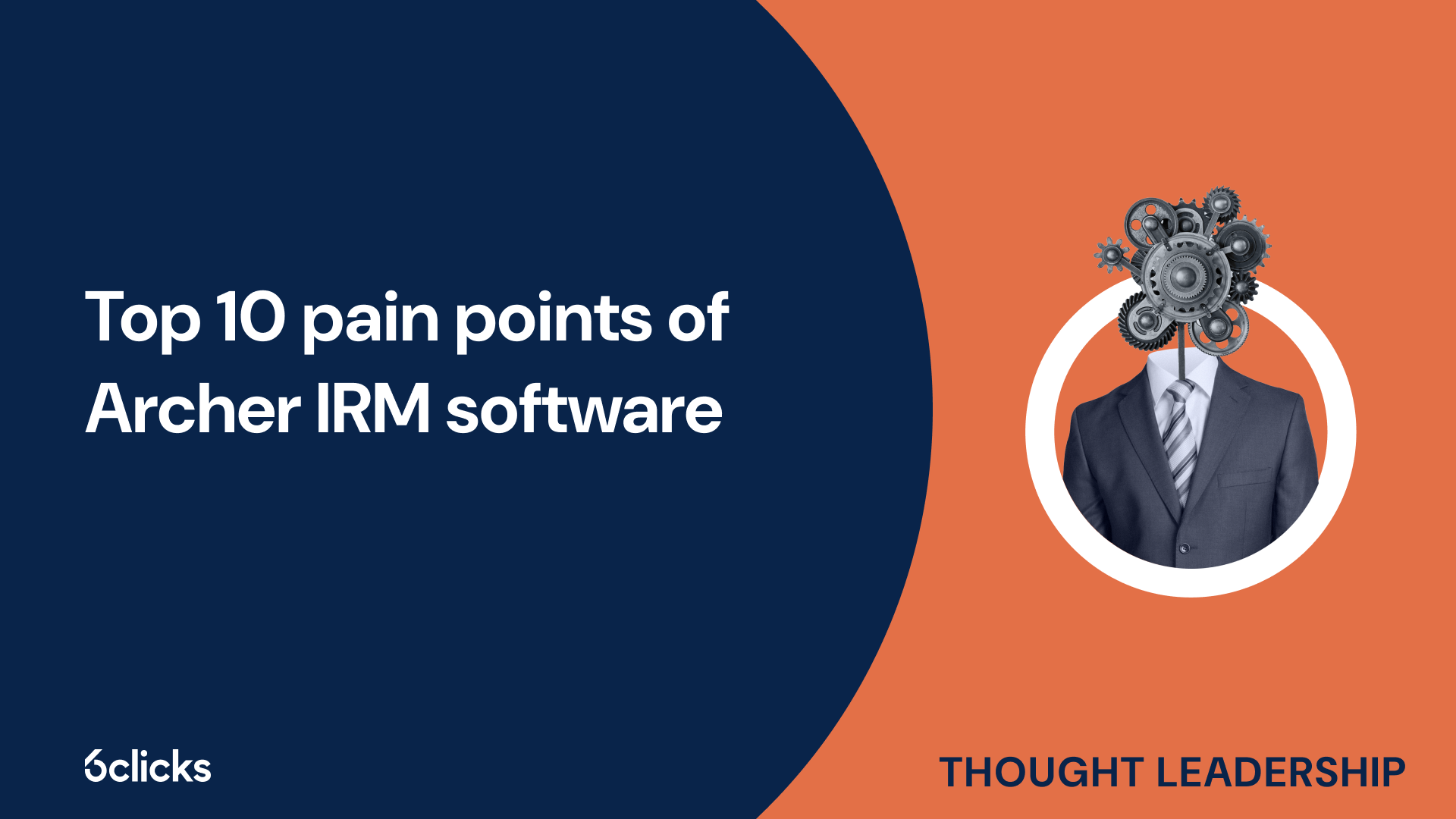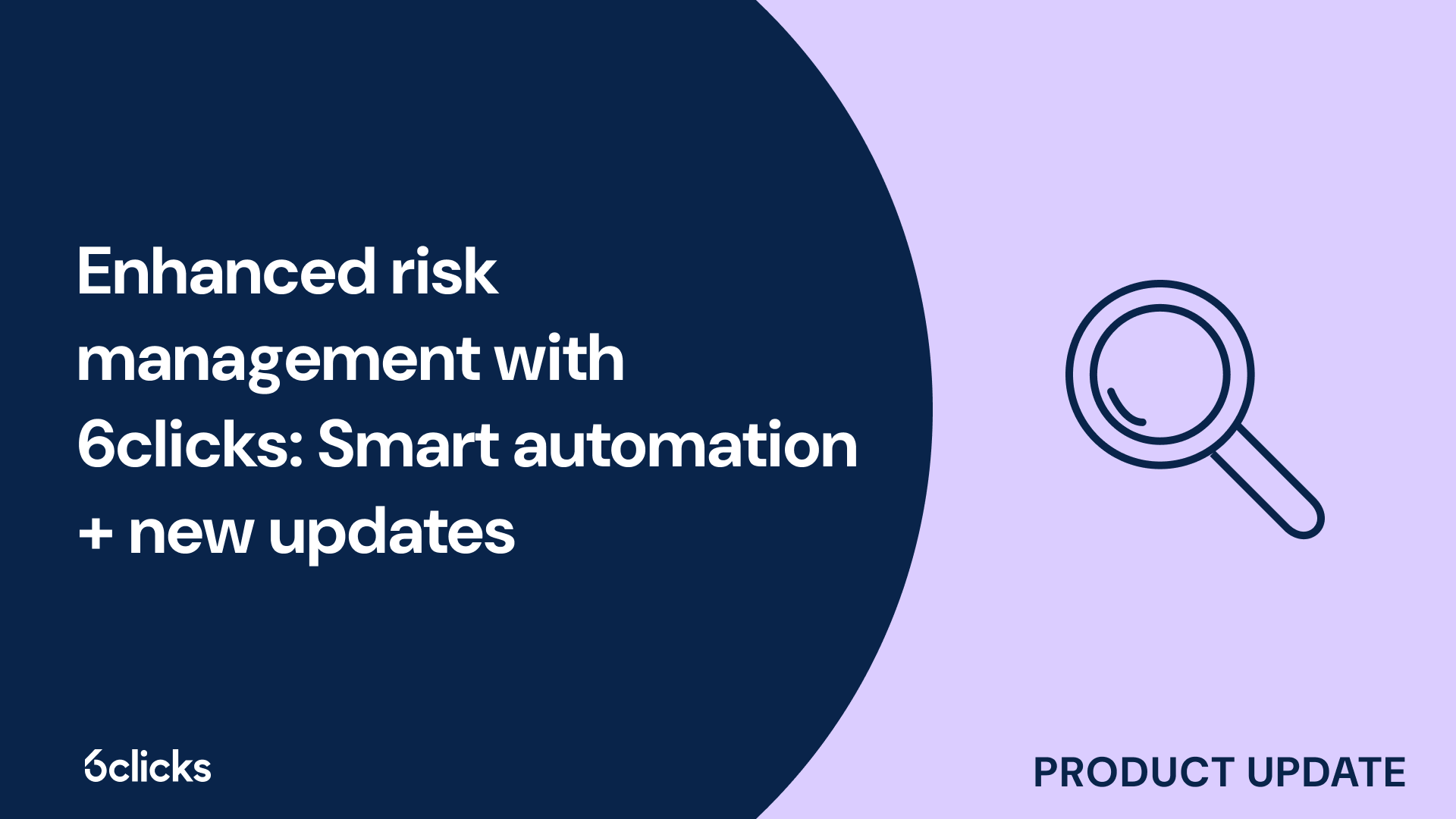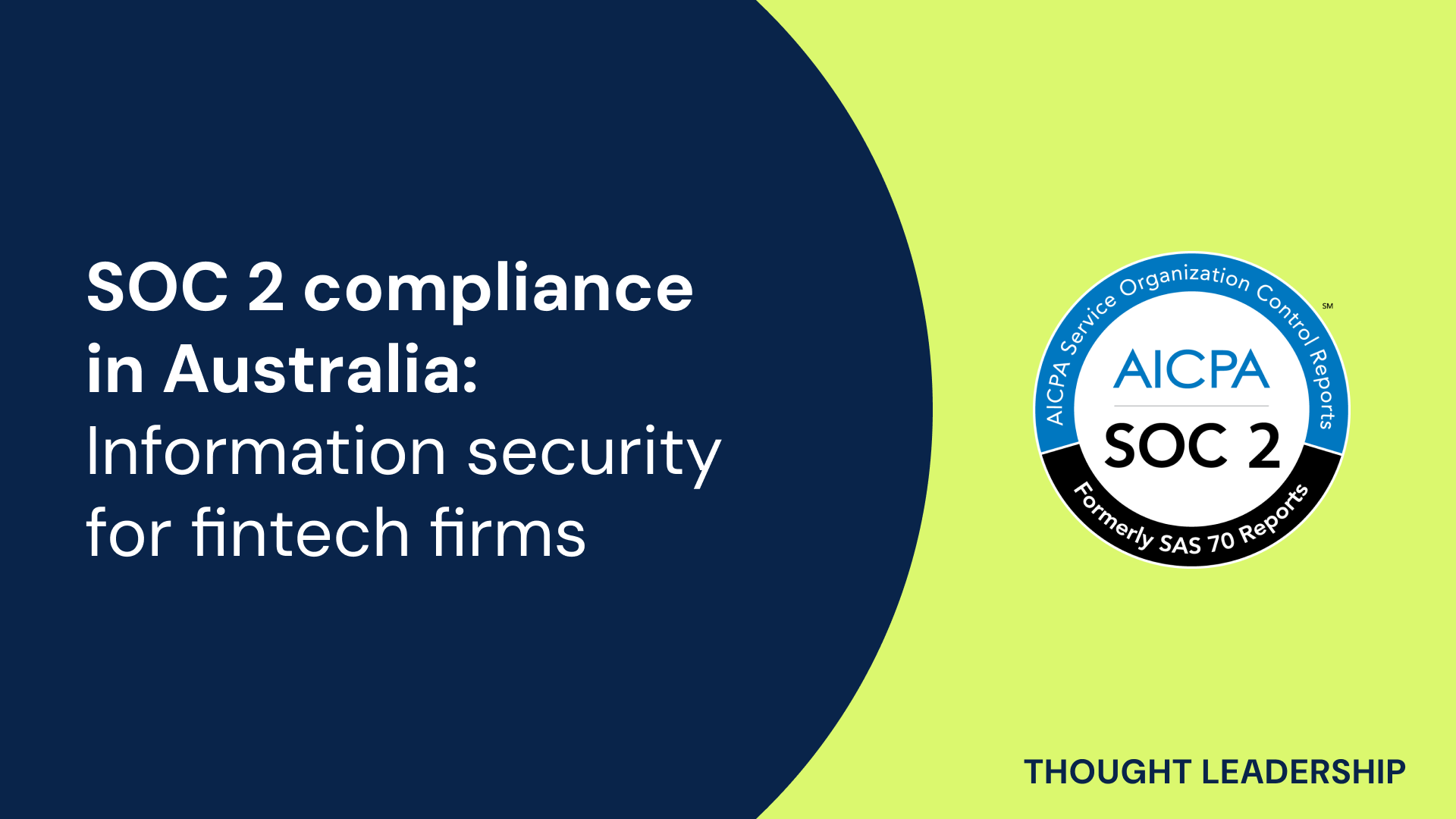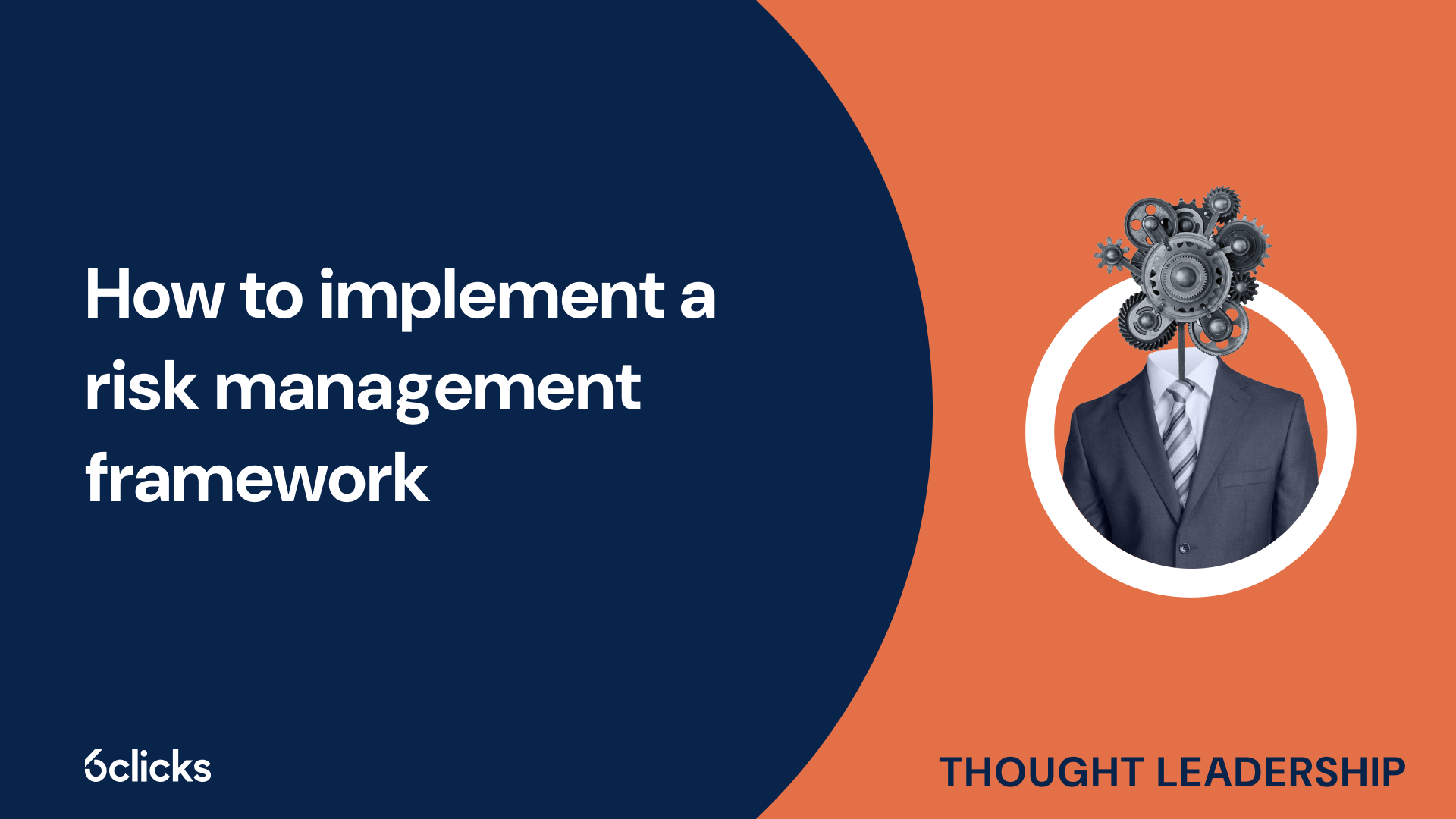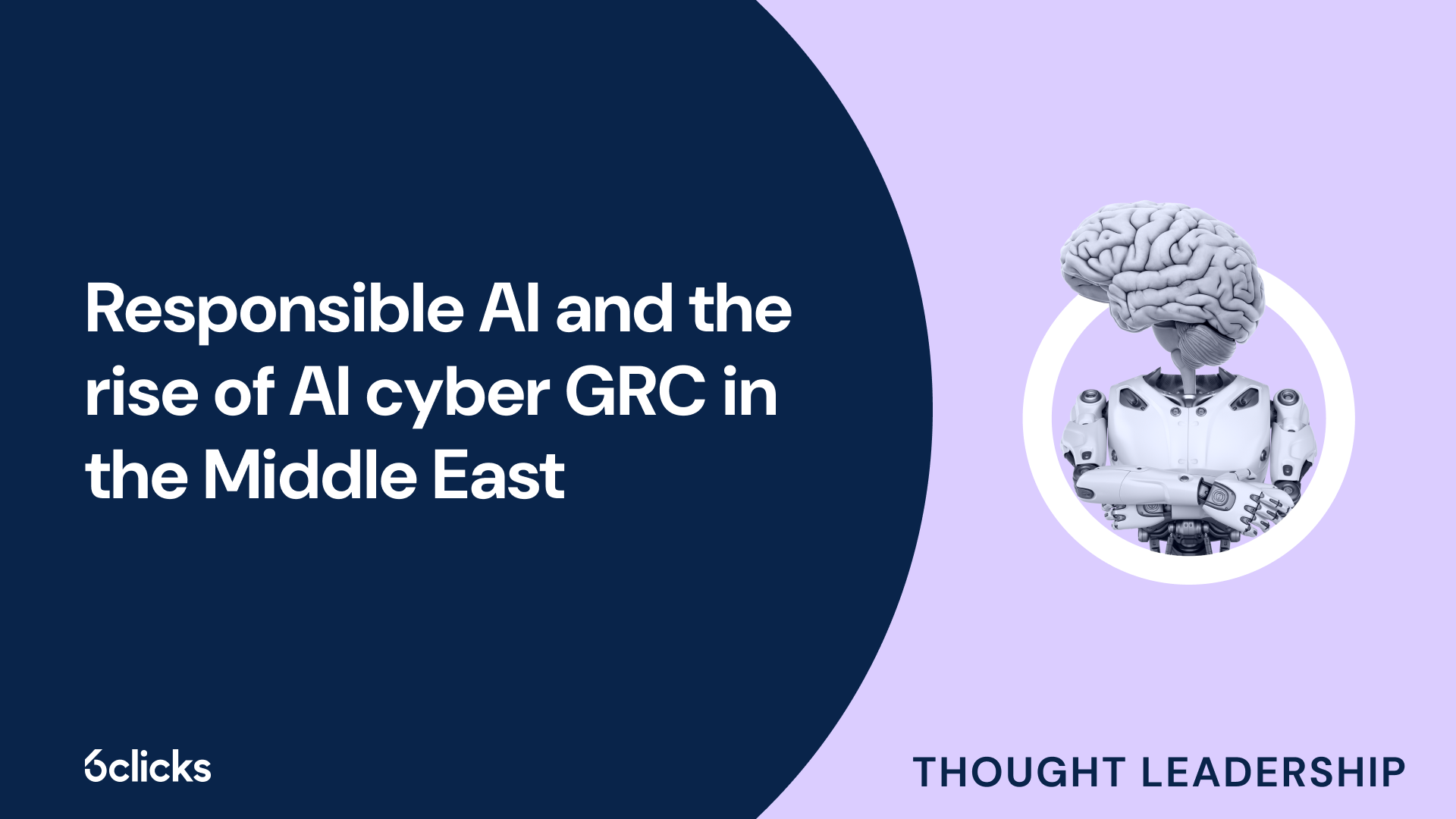The GRC buyer’s guide for 2025: Building resilience with AI-powered, federated solutions
Discover the ultimate GRC buyer's guide for 2025! Uncover how AI-powered, federated solutions transform compliance and security management for industries like government, aerospace, banking, and more. Learn about centralized control, continuous compliance, and advanced cyber GRC capabilities. Download now!
-1.png?width=200&height=249&name=Group%20193%20(1)-1.png)
The GRC buyer’s guide for 2025: Building resilience with AI-powered, federated solutions
What is GRC software?
GRC software, or Governance, Risk, and Compliance software, is a comprehensive solution designed to help organizations manage their business processes, regulatory compliance, and risk management activities. It provides a centralized platform for organizations to streamline their risk assessment, control frameworks, and compliance management. By implementing GRC software, businesses can enhance their decision-making process by aligning their strategic objectives and corporate policies with regulatory requirements. This software enables seamless collaboration among compliance teams and helps automate compliance activities, internal audits, and control assessments. With GRC software, organizations can ensure that compliance risks are identified and managed effectively, facilitating the organization's overall risk management programs and enterprise risk management. It allows organizations to have a holistic view of their risk posture, risk profile, and internal controls, empowering them to make informed decisions that are in line with their business goals and objectives.
Benefits of implementing GRC software
Implementing GRC software offers various benefits that can significantly improve business processes, risk management, regulatory compliance, decision-making, and control frameworks.
- Streamlined Business Processes: GRC software automates and integrates various business processes, reducing manual efforts and increasing operational efficiency. This enables organizations to standardize processes, eliminate redundant tasks, and ensure consistency across the entire organization.
- Enhanced Risk Management: GRC software provides a framework to identify, assess, and manage risks effectively. It enables organizations to conduct risk assessments, monitor key risk indicators, and implement risk mitigation strategies. This proactive approach helps organizations minimize potential risks and make informed decisions to protect their reputation and achieve business objectives.
- Improved Regulatory Compliance: GRC software helps organizations comply with complex regulatory requirements by consolidating and centralizing compliance activities. It allows organizations to track and manage compliance obligations, document evidence of compliance, and streamline reporting processes. This ensures timely adherence to regulatory standards and reduces the risk of non-compliance penalties.
- Informed Decision-Making: GRC software provides real-time data and analytics that enable organizations to make informed decisions. By providing insights into risks, compliance status, and control effectiveness, GRC software empowers decision-makers to align strategic objectives with risk management priorities.
- Robust Control Framework: GRC software enables organizations to establish and monitor internal controls efficiently. It helps document and assess control objectives, evaluate control effectiveness, and identify areas of improvement. This strengthens the control environment, reduces operational errors, and enhances overall organizational governance.
By implementing GRC software, organizations can benefit from improved business processes, enhanced risk management practices, streamlined regulatory compliance, informed decision-making, and a robust control framework. These advantages enable organizations to achieve their business goals while ensuring principled performance and minimizing risks.
Understanding the requirements
Understanding the Requirements: Before implementing GRC software, it is crucial to have a thorough understanding of the organization's requirements. This involves evaluating the existing business processes, assessing the risk posture, and identifying the regulatory compliance requirements. By analyzing the organizational structure and strategic objectives, organizations can determine the key areas where GRC software can streamline operations and enhance governance. Additionally, understanding the specific compliance risks and control frameworks relevant to the industry helps in selecting the appropriate GRC software. By comprehensively understanding the requirements, organizations can effectively implement GRC software that aligns with their business goals and enables efficient risk management and compliance.
Identifying key business goals and objectives
Implementing GRC software begins with identifying key business goals and objectives. This process involves conducting a comprehensive analysis of an organization's strategic objectives, regulatory requirements, and risk management programs.
To start, businesses need to consider the specific business processes and activities that need to be addressed by the GRC software. This entails understanding the organization's existing compliance teams, activities, and internal audits. It is crucial to assess the entire organization's structure and identify areas where manual processes and redundant activities can be streamlined through the implementation of software.
Once the business processes are identified, it is important to assess and prioritize the goals and objectives in relation to compliance risks and business decisions. This entails considering the impact of regulatory compliance requirements on achieving strategic objectives. Moreover, organizations need to analyze potential risks and prioritize them based on their impact and likelihood.
By implementing a GRC software, organizations can improve their ability to make informed decisions. This software assists in managing compliance requirements, control frameworks, control environment, and internal controls. It enables businesses to align their activities with their risk profile and cyber risk appetite. Ultimately, GRC software helps organizations achieve their business goals while ensuring principled performance and adherence to regulatory requirements.
Assessing the regulatory environment and risks
Assessing the regulatory environment and risks is a crucial step in implementing GRC software. Organizations need to thoroughly evaluate the regulatory requirements that are relevant to their industry and understand the potential risks associated with non-compliance.
Identifying and understanding the specific regulatory landscape is essential for effective risk management and compliance. By conducting a thorough assessment, organizations can gain insights into the laws, regulations, and industry standards that they need to comply with. This includes identifying the specific regulatory requirements that impact their business activities.
Furthermore, assessing the regulatory landscape allows organizations to identify potential risks that come with non-compliance. Non-compliance can lead to legal penalties, reputational damage, financial loss, and even operational disruptions. By understanding the potential risks, organizations can prioritize their compliance efforts, allocate resources effectively, and implement necessary controls and safeguards to mitigate those risks.
Analyzing organizational structure and processes
Analyzing the organizational structure and processes is a crucial step in implementing GRC software effectively. By understanding the current structure and processes in place, organizations can assess how they relate to compliance activities and risk management.
The organizational structure encompasses the hierarchy, reporting lines, and decision-making processes within the company. It is important to identify the roles and responsibilities of individuals or teams involved in compliance activities and risk management. This ensures that there is clear accountability and coordination throughout the organization.
The processes refer to the activities and workflows that are followed to achieve business goals and objectives. These processes may involve manual controls and redundant processes that may be prone to errors or inefficiencies. Understanding the existing processes allows organizations to identify any gaps or areas for improvement in terms of compliance and risk management.
Identifying these gaps is essential as it provides an opportunity to streamline processes, eliminate redundancies, and automate manual tasks through the implementation of GRC software. This helps in improving efficiency and effectiveness, reducing the risk of non-compliance, and enhancing overall risk management practices.
By analyzing the organizational structure and processes, organizations can gain valuable insights into areas where improvements are needed, allowing them to align their compliance and risk management efforts with their strategic objectives and regulatory requirements. This, in turn, enables them to make informed decisions and implement comprehensive GRC software solutions that address their specific needs and challenges.
Evaluating existing compliance programs and systems
To implement GRC software effectively, it is crucial to evaluate the existing compliance programs and systems within the organization. This entails conducting an assessment to determine their effectiveness and alignment with regulatory requirements and business goals.
Start by analyzing the current compliance programs and systems in place. Look at the processes, controls, and tools that are being utilized to manage compliance activities. Evaluate how well these systems are performing and identify any areas where improvements can be made.
In assessing the effectiveness of existing compliance programs, consider whether they are able to address the organization's specific regulatory requirements. Determine if the programs are adequately designed to mitigate compliance risks and support the achievement of business goals.
Additionally, evaluate the level of automation and integration within the current systems. GRC software should be able to streamline manual processes, eliminate redundancies, and enhance efficiency. Look for any gaps where automation can be introduced and manual tasks can be reduced.
By conducting a thorough evaluation of existing compliance programs and systems, organizations can identify areas for improvement and determine how GRC software can be implemented to enhance their effectiveness. This will ensure that regulatory requirements are met, risks are properly managed, and business goals are achieved.
Choosing the right GRC software solution
Choosing the right GRC software solution is crucial for organizations to effectively manage their business processes, regulatory compliance, and risk management programs. With the wide range of options available in the market, it is important to carefully evaluate and select a software solution that aligns with the organization's strategic objectives and regulatory requirements. The chosen software should be able to automate manual processes, streamline compliance activities, and provide a user-friendly experience. It should also support the establishment of control frameworks, enable the assessment of controls, and aid in making informed decisions. By selecting the right GRC software solution, organizations can enhance their compliance management, reduce compliance risks, and achieve principled performance across the entire organization.
Features to look for in a GRC system
When selecting a GRC (Governance, Risk, and Compliance) system, there are several essential features that should be considered. These features ensure that the software enables effective risk assessment, compliance management, control assessment, and reporting capabilities.
Firstly, a GRC system should have robust risk assessment functionalities. This includes the ability to identify and assess risks across a wide range of business processes and activities. The software should provide a systematic approach to evaluating potential risks, helping organizations prioritize their efforts and make informed decisions.
Secondly, compliance management capabilities are crucial. The GRC system should streamline compliance activities by allowing organizations to define and track regulatory requirements and internal compliance requirements. This ensures that compliance teams can efficiently manage and monitor adherence to these standards.
Furthermore, control assessment functionalities are vital for a comprehensive GRC system. The software should support the evaluation of internal controls, including manual controls and control frameworks. This enables organizations to assess the effectiveness of their control environment and identify any gaps or weaknesses that require attention.
Lastly, reporting capabilities are essential in a GRC system. It should offer customizable reporting features, providing organizations with the ability to generate accurate and meaningful reports on their risk management and compliance activities. This facilitates internal audits and helps stakeholders understand the organization's risk posture, enabling informed decision-making.
Comparing different solutions on the market
When comparing different GRC software solutions on the market, it is important to consider their features, functionalities, and pricing models. Here are a few popular options:
- SAP GRC: SAP offers a comprehensive GRC software solution that includes risk management, compliance management, and control assessment functionalities. It provides a wide range of features such as regulatory compliance, internal controls, and risk assessments. SAP GRC is known for its robust reporting capabilities and user-friendly interface. However, it tends to be more expensive compared to other options.
- IBM OpenPages: IBM OpenPages is another popular GRC software solution that offers a range of features including risk management, compliance management, and control assessment. It provides powerful analytics and reporting functionalities, allowing organizations to make informed decisions. IBM OpenPages is known for its scalability and flexibility, making it suitable for large enterprises. However, pricing can be high depending on customization requirements.
- RSA Archer: RSA Archer is a GRC software solution that offers comprehensive functionalities for risk management, compliance management, and control assessment. It provides a customizable platform that can be tailored to meet specific organizational needs. RSA Archer is praised for its ease of use and flexibility. However, it may require a significant upfront investment.
When comparing these solutions based on the organizational needs and requirements identified earlier, SAP GRC stands out for its robust risk assessment and reporting capabilities. IBM OpenPages offers scalability and flexibility, making it suitable for large enterprises. RSA Archer provides a customizable platform, allowing organizations to meet specific needs. Pricing varies for each solution, so it is important to evaluate the pricing models based on the budget and resources available. Ultimately, the choice of GRC software solution will depend on the organization's specific requirements and priorities.
Selecting the best-suited solution for your organization
When it comes to selecting the best-suited GRC (Governance, Risk, and Compliance) software solution for your organization, there are several key factors to consider. These include your specific business goals and objectives, regulatory requirements, and existing compliance programs and systems.
To begin the selection process, it is important to establish clear business objectives and goals that align with your organization's overall strategy. Determine what specific areas of risk management, compliance, and control assessment you are looking to improve or streamline.
Next, identify regulatory requirements that your organization must comply with. Different industries and regions have their own unique compliance standards, so it is crucial to select a GRC software solution that can address these specific requirements effectively.
Evaluate your existing compliance programs and systems to identify any gaps or inefficiencies that the new software solution should address. Consider what functionalities or features are missing or could be improved upon.
Once you have a clear understanding of your organization's needs, it is time to compare different GRC software solutions on the market. Assess the features and functionalities offered by each solution and determine how well they align with your specific requirements. Look for key capabilities such as risk assessment, compliance management, control assessment, and reporting.
Consider factors such as the scalability, flexibility, and user experience of each solution. It is also important to take into account the total cost of ownership, including the pricing structure and any additional customization or implementation costs.
By carefully evaluating and comparing different GRC software solutions, you can select the one that best fits your organization's needs and helps you achieve your business goals while ensuring compliance with regulatory requirements.
Setting up your GRC software system
Setting up your GRC software system is a critical step in effectively managing risk, compliance, and control assessment within your organization. By implementing a robust GRC solution, you can streamline your business processes, ensure regulatory compliance, and make informed decisions based on accurate and up-to-date data. To successfully set up your GRC software system, start by establishing clear business objectives and goals that align with your overall strategy. Identify the specific areas of risk management and compliance that you want to improve or streamline. Next, identify the regulatory requirements that your organization must comply with to ensure that the chosen GRC software solution can effectively address these requirements. Evaluate your existing compliance programs and systems to identify any gaps or inefficiencies that the new software solution should address. Finally, compare different GRC software solutions on the market, assessing their features, functionalities, scalability, flexibility, and user experience, while considering the total cost of ownership.
Establishing governance framework and policies
Establishing a governance framework and policies is crucial for successful GRC software implementation. A strong governance structure ensures that the program aligns with the company's business model, decision-making processes, and organizational structure. Here are the key steps to establishing effective governance for GRC software:
- Define a Governance Framework: Begin by outlining the overall governance structure and framework for the GRC program. This framework should clearly define roles, responsibilities, and decision-making processes.
- Develop Policies: Create specific policies that govern the use of the GRC software. These policies should address areas such as risk assessment, compliance management, internal controls, and data privacy. Ensure that the policies align with the company's strategic objectives and regulatory requirements.
- Align with Business Processes: Integrate the GRC software into existing business processes to streamline operations and enhance efficiency. This alignment ensures that GRC activities are seamlessly incorporated into daily business activities.
- Communicate Internally: Establish effective internal communication channels to ensure that stakeholders are aware of the GRC program and their roles within it. This includes educating employees about the software's purpose, functionalities, and benefits.
- Build Strong Stakeholder Relationships: Foster strong relationships with key stakeholders, such as compliance teams, internal audit, and senior management. Regularly engage with these stakeholders to gain their input and support in shaping the GRC program.
By establishing a governance framework and policies, companies can effectively implement GRC software and enhance their risk management and compliance activities. This ensures informed decision-making, adherence to regulatory requirements, and principled performance across the entire organization.
Integrating with existing systems and manual processes
Integrating a GRC software with existing systems and manual processes is a critical step in successfully implementing a governance, risk, and compliance program. This integration ensures seamless collaboration between the GRC software and other business applications, streamlines operations, and enhances overall efficiency.
To start, it is important to map out the implementation process. This involves understanding the existing systems and manual processes within the organization and identifying points of integration for the GRC software. It is crucial to take into account the unique business requirements and compliance needs of the organization.
Assigning roles and responsibilities is another crucial aspect of integration. Identify a project team that includes key stakeholders from IT, compliance, risk management, and other relevant departments. Clearly define the responsibilities of each team member, ensuring that they understand their roles in the integration process.
Allowing enough time for integration tasks is essential. Rushing the process can lead to errors and setbacks. A well-planned timeline should include sufficient time for testing, training, and data migration.
One of the major benefits of integrating a GRC software is workflow automation. By automating manual processes and integrating with existing systems, the software eliminates the need for redundant tasks, saving time and reducing costs. It also reduces the risk of manual errors, as data is captured and shared automatically.
Continuous controls monitoring is another advantage of integrating GRC software. It allows for real-time monitoring and reporting of compliance activities, ensuring that controls are in place and effective in mitigating risks.
Customizing configuration settings to fit your needs
Customizing configuration settings in GRC software is essential to align the software with your organization's specific needs. This allows you to tailor the software to fit your unique business processes, risk assessment methodologies, and organizational structure.
The first step in customizing the configuration settings is to identify the specific requirements of your organization. This involves understanding your strategic objectives, compliance needs, and regulatory requirements. By assessing these factors, you can determine which settings need to be customized to address your organization's unique challenges.
One crucial aspect of customization is configuring workflows. By customizing workflows, you can streamline processes and automate tasks, reducing manual effort and ensuring efficient collaboration across departments. This also promotes ease of use for all stakeholders by aligning the software with your existing business activities.
Customizing user interfaces is equally important. By tailoring the user interface to match your organization's branding, terminology, and navigation preferences, you can enhance user experience and adoption. This simplifies training and promotes user engagement with the GRC software.
Additionally, implementing user management software is crucial for controlling access to resources within the GRC system. By customizing user management settings, you can define role-based access controls, ensuring that users only have access to the information and functionalities necessary for their responsibilities. This helps mitigate security risks and maintain data integrity.
Finally, a change management program is crucial to act upon insights gained from the GRC software. By customizing the software to capture and report key compliance risks and control assessments, organizations can use this information to drive informed decisions and prioritize areas for improvement. This requires a change management program that enables swift action based on the insights provided by the GRC software.



